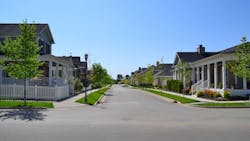Building High-Value Communities
When moving into new single-family home communities, buyers are looking at more than specific home features. They are also considering a community’s location and overall quality. Analyzing data from the U.S. Census Bureau, the National Association of Home Builders found that proximity to large city centers and a community’s surrounding neighborhood context both play a major role in a property’s overall value.
Location is the most important factor
The location of a new-home community is one of the most important considerations for homebuyers. The study found that homes built in big metropolitan areas are valued 60% higher than comparable homes in non-metro areas, while homes built in smaller or midsized metros are valued at 22% more.
Homebuyers are willing to pay more for quality
Buyers will also pay more for a higher-quality neighborhood. Whether it's the safety of a neighborhood or its access to outdoor space, how a community feels is important to buyers.
Measuring neighborhood quality on a scale from one to 10, the analysis shows that each ranking on the scale can increase a home’s value by 2%. In other words, a community that scores a three on the scale is still valued at 4% higher than a community that scores a one.
Meanwhile, negative surrounding conditions decrease a neighborhood’s value
On the other end, negative surroundings can easily lower a home’s value. Homes that are built near abandoned or vandalized buildings have 17% lower values than comparable homes in other areas. Additionally, the presence of visible trash nearby reduces home values by 8%.
While neighborhood quality is important, homebuyers also prioritize specific features when shopping for a home
- Single-Family Home Features That Drive Value: When it comes to the home itself, homebuyers care the most about size and functionality.
- Homebuyers Want These Features in 2025: A report from earlier this year shows homebuyers gravitate toward energy-efficient features and remote work areas when shopping for a home.
